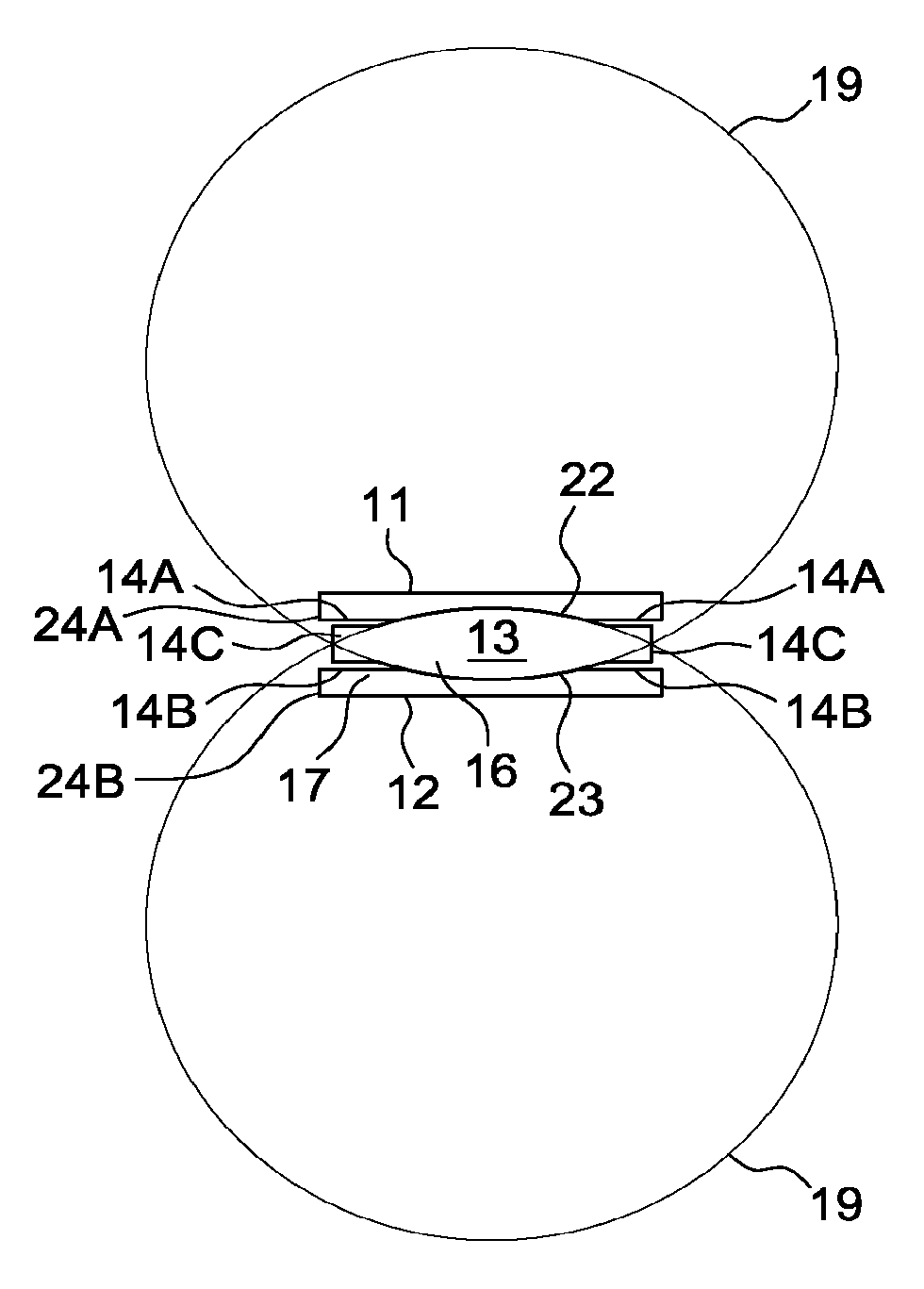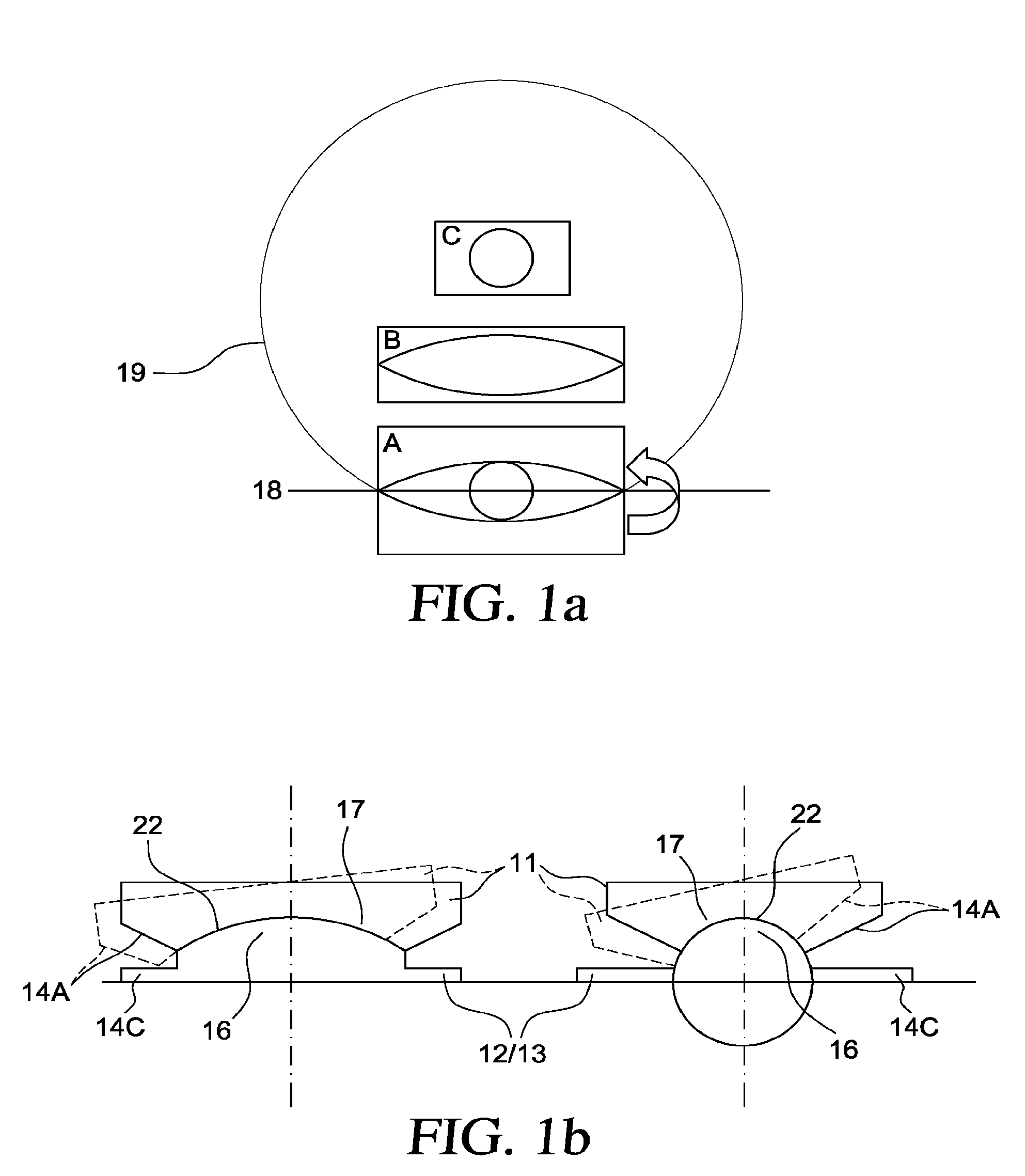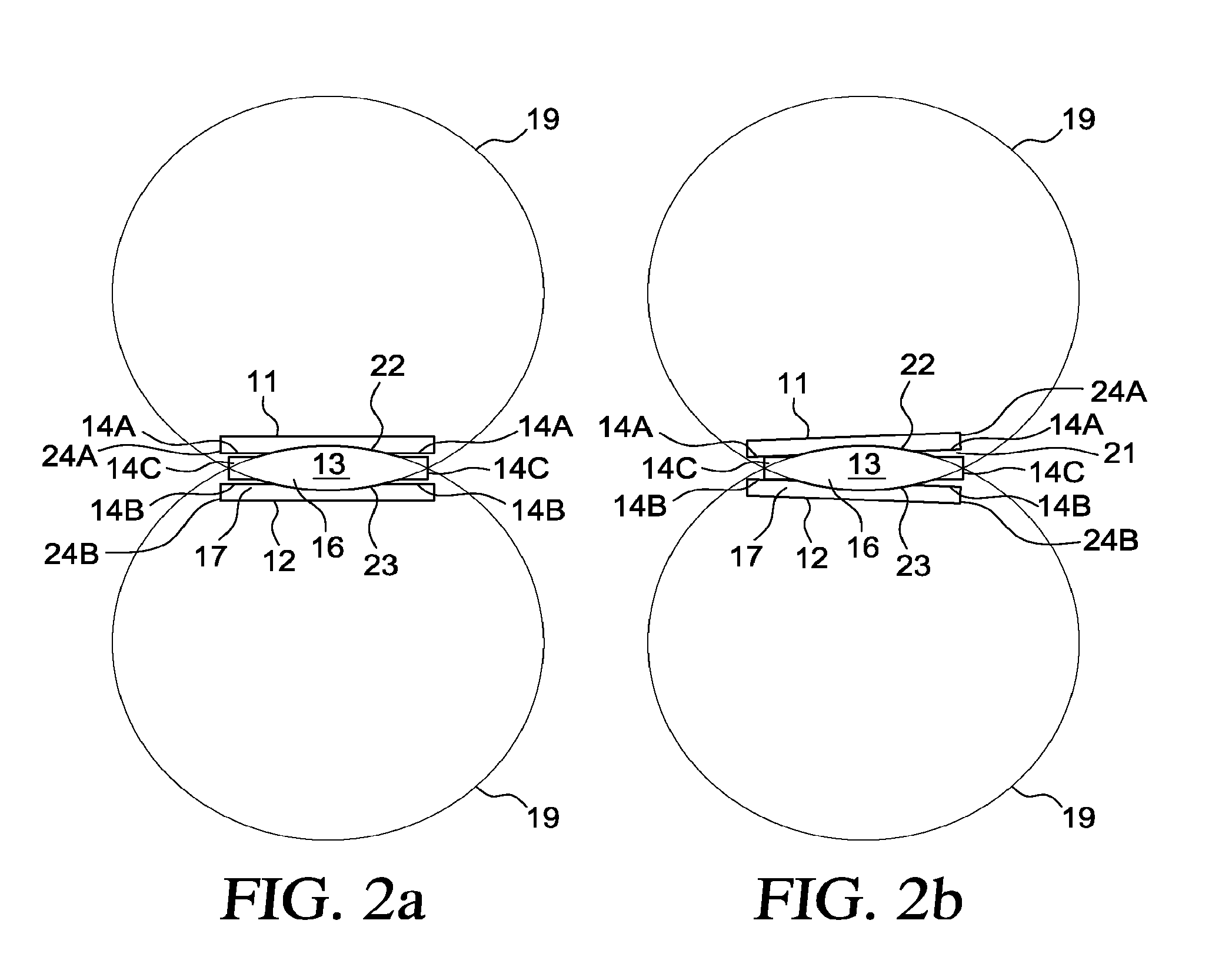Physologically Movable Intervertebral Disc Prosthesis for the Lumbar and Cervical Spine
a technology of intervertebral discs and lumbar spines, which is applied in the field of physically movable intervertebral disc prosthesis for the lumbar and cervical spine, can solve the problems of irritating neural structures, requiring more surgical effort, and damaging the vertebral endplates, so as to achieve optimal lordosis and positioning of sliding areas, the effect of maximizing the load transfer area
- Summary
- Abstract
- Description
- Claims
- Application Information
AI Technical Summary
Benefits of technology
Problems solved by technology
Method used
Image
Examples
Embodiment Construction
[0141]In FIG. 1a, part A of the figure shows how the curvation of the surfaces of a middle sliding partner with identical upper and lower sides are derived from a circumference 19 and originates from the rotation of the smaller segment of a circle, which is indicated by the arrow, around the secant 18. Part B of the figure shows the shape resulting from the rotation, which is identical in a frontal and transversal section. In a sagittal section C of the solid body, which originates from the rotation of the smaller segment of a circle around the secant 18, it has in each view a circular cross-section. The radii within the sagittal section decrease continuously from the middle of the geometric body to both lateral sides.
[0142]In FIG. 1b, the left schematically depicts a frontal view of a sliding area 22, 23 of an intervertebral two-part or three-part disc prosthesis, as per the invention. The right part of FIG. 1b schematically shows a sagittal view. The figure illustrates the identic...
PUM
 Login to View More
Login to View More Abstract
Description
Claims
Application Information
 Login to View More
Login to View More - R&D
- Intellectual Property
- Life Sciences
- Materials
- Tech Scout
- Unparalleled Data Quality
- Higher Quality Content
- 60% Fewer Hallucinations
Browse by: Latest US Patents, China's latest patents, Technical Efficacy Thesaurus, Application Domain, Technology Topic, Popular Technical Reports.
© 2025 PatSnap. All rights reserved.Legal|Privacy policy|Modern Slavery Act Transparency Statement|Sitemap|About US| Contact US: help@patsnap.com



